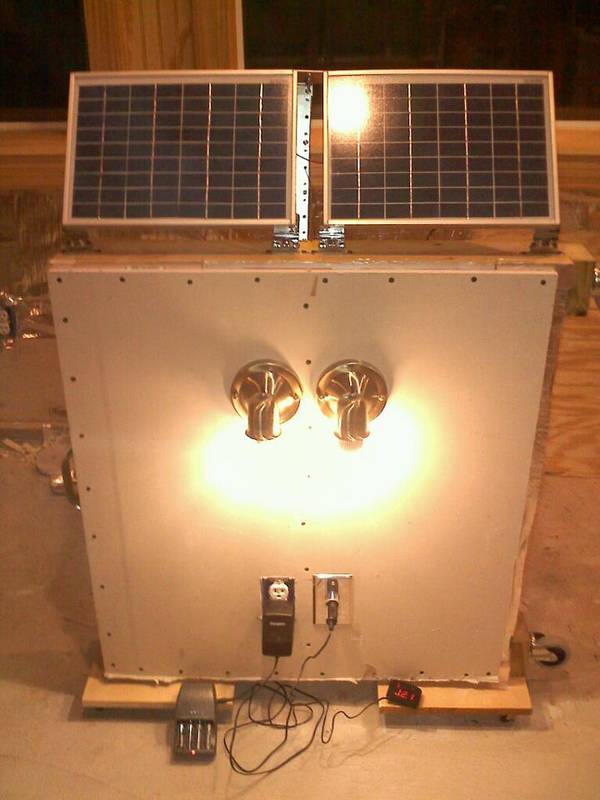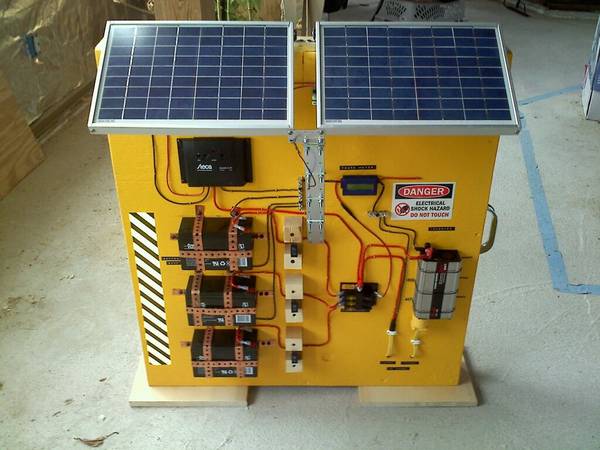I've been trying to find a way to achieve essential solar electric that is feasible, provides a sense of accomplishment, and doesn't cost $thousands. A focus on lighting seems to be very possible, and while it may not achieve the biggest savings on the electric bill, it does highlight the possibilities in a very "visible" way.
The first babystep was the simple purchase of two rechargeable solar light bulb devices from Nokero, the N200 and N220. Both recharge from sunlight during the day (have to hang these outside), and the N200 then provides under the counter lighting for early morning coffee making, while the N220 provides ceiling lighting for use of the computer. For me these demonstrated that simple solar lighting is feasible, and also made clear the benefits of turning a light out when not needed, as leaving these "on" when not needed runs down the battery charge.
The next step is beginning to become clear. I bought at close-out prices 11 - 7 watt LED bulbs, about 40 watt incandescent and 13 watt CFL equivalent, with medium bases that fit standard light fixtures. These were $5.00 each. They are daylight white vs warm white of the CFL's they replaced. I didn't tell my wife I did this and she hasn't noticed the change. LED's are well suited to solar electric.
The next step I think can be a conversion to full solar for most of our basic lighting, which is quite possible with LED bulbs. Fortunately, our breaker panel has several circuits that are or can be converted to lighting only. A fairly small solar panel system with batteries can be wired to feed these circuits directly with 12vdc, and the lighting can be 12vdc LED, or with an inverter the 120vac circuits can be used.
Still thinking this through. Have others gone this route? Better ideas?
Question for the gurus: the 120vac LED's have a PF of about 0.7 (7 watts and 10va). Do 12vdc LED bulbs operate at a higher efficiency? Are there other 120vac LED's that operate closer to PF=1?
The first babystep was the simple purchase of two rechargeable solar light bulb devices from Nokero, the N200 and N220. Both recharge from sunlight during the day (have to hang these outside), and the N200 then provides under the counter lighting for early morning coffee making, while the N220 provides ceiling lighting for use of the computer. For me these demonstrated that simple solar lighting is feasible, and also made clear the benefits of turning a light out when not needed, as leaving these "on" when not needed runs down the battery charge.
The next step is beginning to become clear. I bought at close-out prices 11 - 7 watt LED bulbs, about 40 watt incandescent and 13 watt CFL equivalent, with medium bases that fit standard light fixtures. These were $5.00 each. They are daylight white vs warm white of the CFL's they replaced. I didn't tell my wife I did this and she hasn't noticed the change. LED's are well suited to solar electric.
The next step I think can be a conversion to full solar for most of our basic lighting, which is quite possible with LED bulbs. Fortunately, our breaker panel has several circuits that are or can be converted to lighting only. A fairly small solar panel system with batteries can be wired to feed these circuits directly with 12vdc, and the lighting can be 12vdc LED, or with an inverter the 120vac circuits can be used.
Still thinking this through. Have others gone this route? Better ideas?
Question for the gurus: the 120vac LED's have a PF of about 0.7 (7 watts and 10va). Do 12vdc LED bulbs operate at a higher efficiency? Are there other 120vac LED's that operate closer to PF=1?



